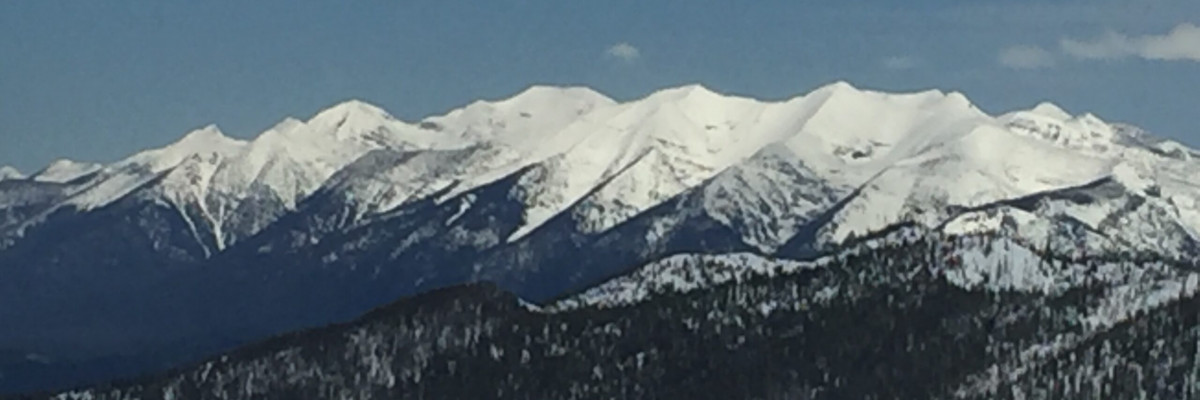The current avalanche danger is MODERATE for the west central Montana backcountry. Mild temperatures and a load of new dense snow will make human triggered avalanches possible on specific terrain features.
Good morning, this is Logan King with the West Central Montana Avalanche Center’s avalanche advisory for Saturday, March 12, 2016. This danger rating does not apply to operating ski areas, expires at midnight tonight and is the sole responsibility of the U.S. Forest Service.
Weather and Snowpack
Precipitation over night was limited to 1-2 inches of snow in the southern Bitterroots. However since mid-week the advisory area received about an inch of SWE, providing a stout load mainly to the southern portion of the region. Mountain temperatures this morning are above freezing and the winds are currently 5 mph gusting to 17 mph from the SSE at Point 6, and 15 mph gusting to 21 mph from the S at Deer Mountain further south.
Nick and Geoff toured near Lost Trail Pass on Thursday and found a new load of warm wet snow sitting on colder lower density snow. Travis and I were in the rattlesnake Yesterday and also found a modest new load of warm snow along with mild temperatures and significant solar radiation. The primary concern today will be loose wet slides in steep or heavily solar affected terrain. Avoid terrain traps and plan routes accordingly to avoid slopes that are receiving abundant solar radiation and warming.
Persistent slabs continue to be the secondary avalanche concern as we found layers of facets in the Rattlesnake and at Lost Trail that were failing readily in compression test but were failing to propagate. Although the persistent slabs are not propagating a new load of heavy snow may bring us to the tipping point that results in slab releases of the persistent weak layers. Dig pits on representative slopes to determine if persistent weak layers are present and if they may be reactive and reevaluate slopes as the load changes throughout the day.
Lastly strong winds continue to be the norm for the advisory area, windslabs are small but widespread and can best be described as “pockety”. Carefully evaluate terrain for signs of wind deposition and be leery of cornices as well. The varied but strong winds have made some double cornices and pockets of wind slabs can be found on nearly all aspects.
Weather and Avalanche Outlook
The wet pattern that is currently moving through the area is expected to continue brining light snow and rain today with a cold front entering the area late Sunday. Current conditions will leave snow lines high until the passage of the cold front later this weekend. Avalanche hazard will remain the same but keep in mind that avalanche activity will peak today in the afternoon with high solar radiation and warm temperatures.
The next advisory will be issued on Tuesday, if you get out please share your observations on our public observations page.
























